| Lima | Ollantaytambo and Inca Rail | Machu Picchu | Cusco |
When you step out of the new train station in Machu Picchu del Pueblo, the first thing you notice is the towering walls of rock lurking over the town. The nearly-vertical hillsides are dotted with aerial plants, aiding in giving the behemoths some perspective.
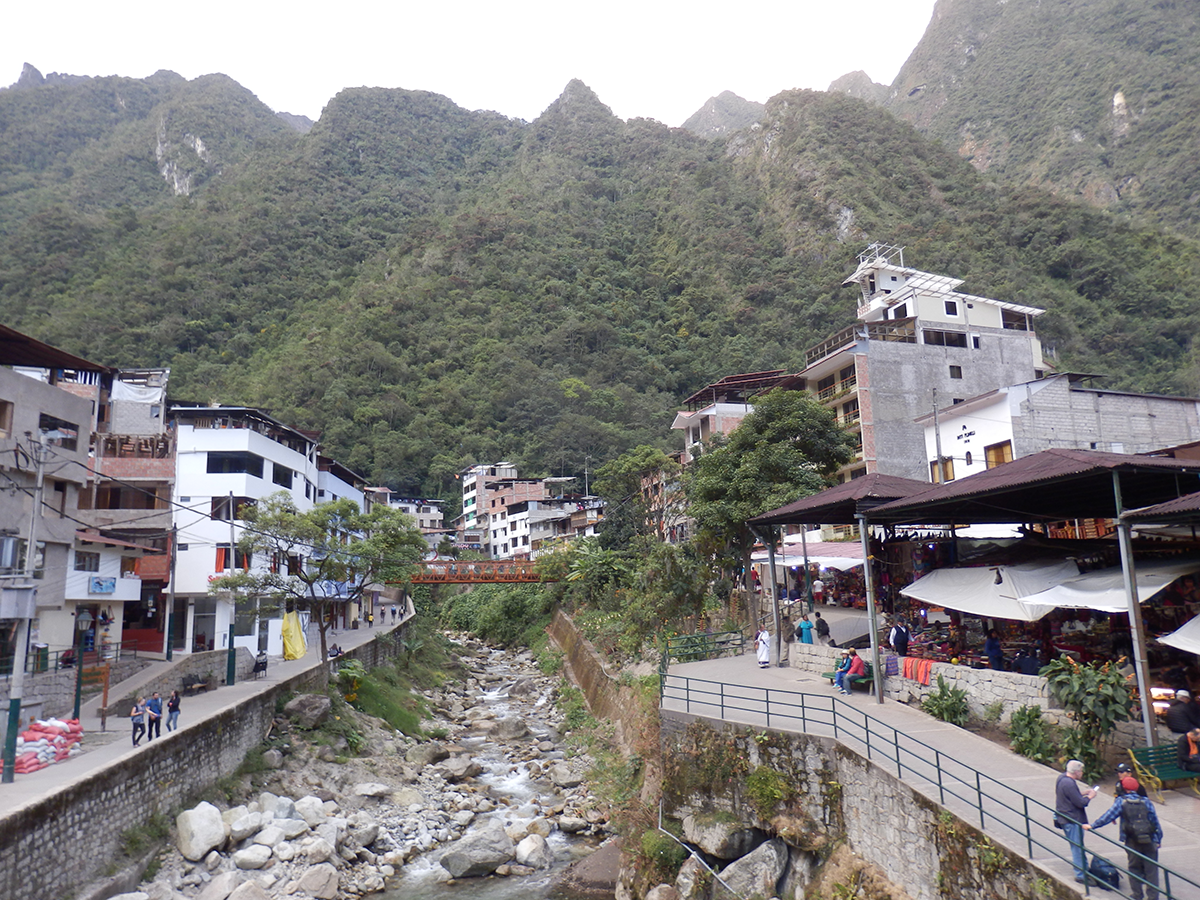
Next, you are immediately struck by the realization that the town is, first and foremost, set up for tourists. When you exit the station you may be immediately lost in the maze-like market packed with the same woolen products and other trinkets you’ll see in every shop in Ollantaytambo, Pisac, Cusco, even all the way back at Lima. English is spoken everywhere. It has the feel of a mall – pleasant, friendly, comfortable, but not challenging in any way.
We wandered around in search of something less touristy. Some kids were practicing for a parade in the school courtyard. Later, a younger batch rehearsed some kind of dance in the town square, coached by a man clutching a belt (we never saw him use it for any reason, including holding up his pants.) The kids’ parents watched, smiling at the scene.
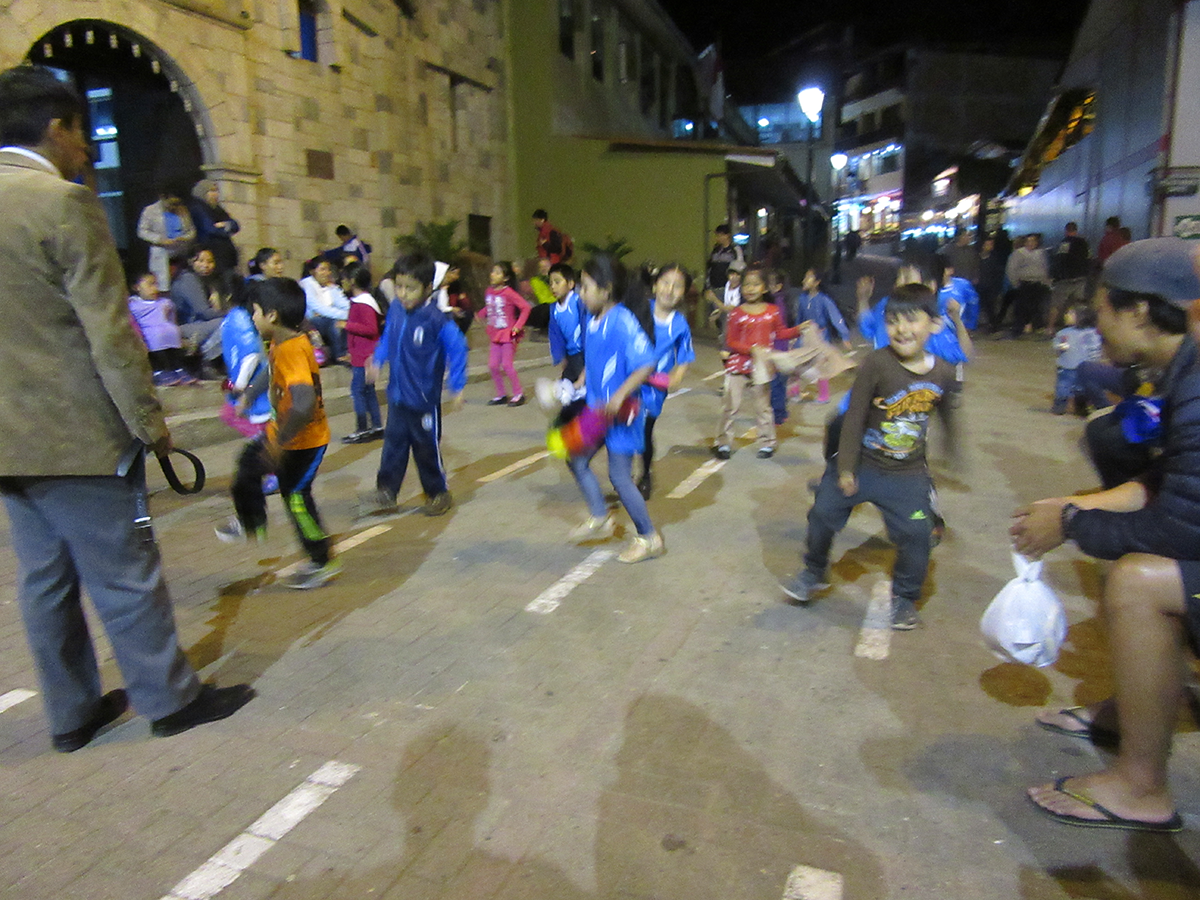
We found a soccer field where some officials were giving away trophies to various teams, though it didn’t appear that any match had taken place. The stores on that side of town are about half the price of those closer to the square (at least if you get away from the train station.) We found an actual supermarket over there as well, so there is local life if you look hard enough.
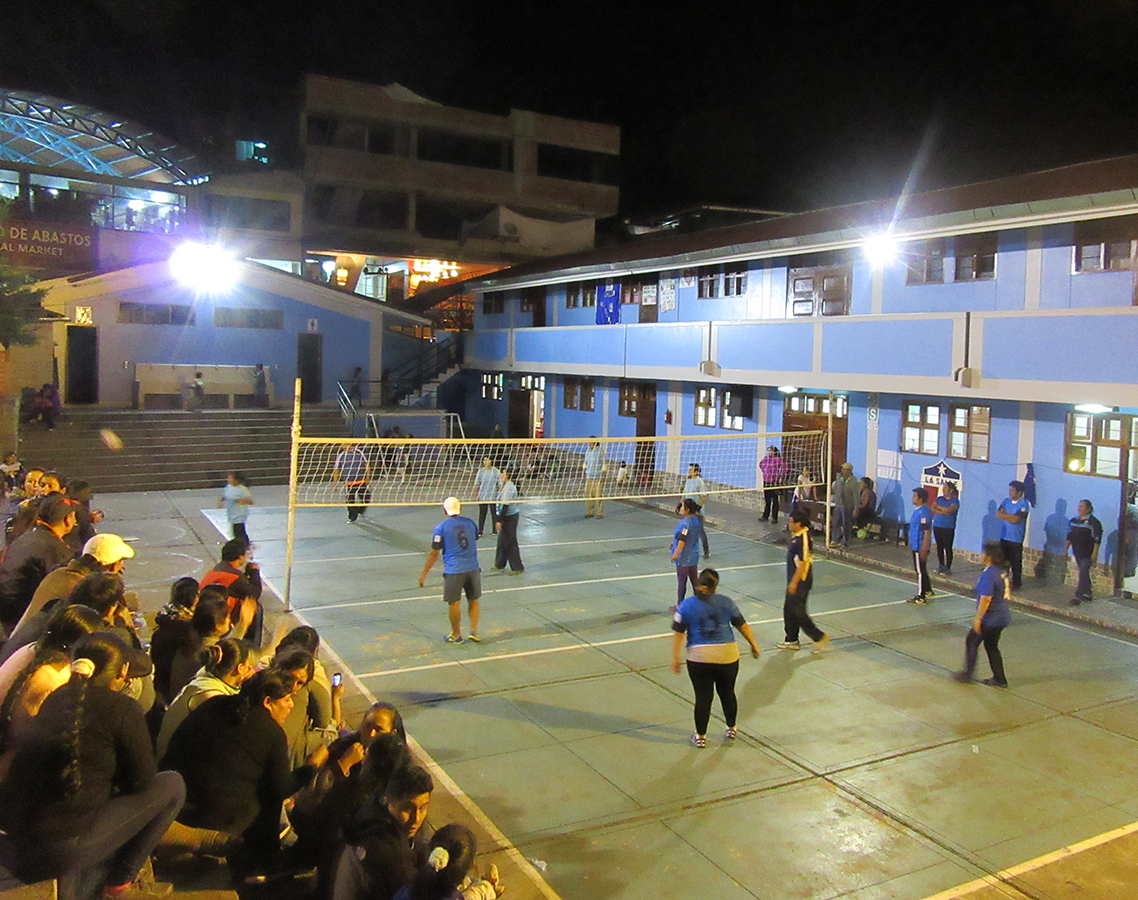
Of course, you don’t have to dig for local culture. We had dinner at some pirate-themed restaurant, packed to the gills with people we’d seen on the train ride, and called it an early night.
The buses for Machu Picchu begin departing around dawn. The ticket booth for the buses only takes cash and you need to show a passport for every ticket. Though the line to board the buses is very long, they’ve got the system down pat. You’ll be on a bus and headed up the mountain in no time. There is the option to hike it but we were warned it was a long, arduous trek, resulting in arriving at the ruin in the heat of the day when the crowds are most intense. Instead, I recommend getting up early – something I will almost never do – so that you can get there as the sun begins to peek over the mountains.
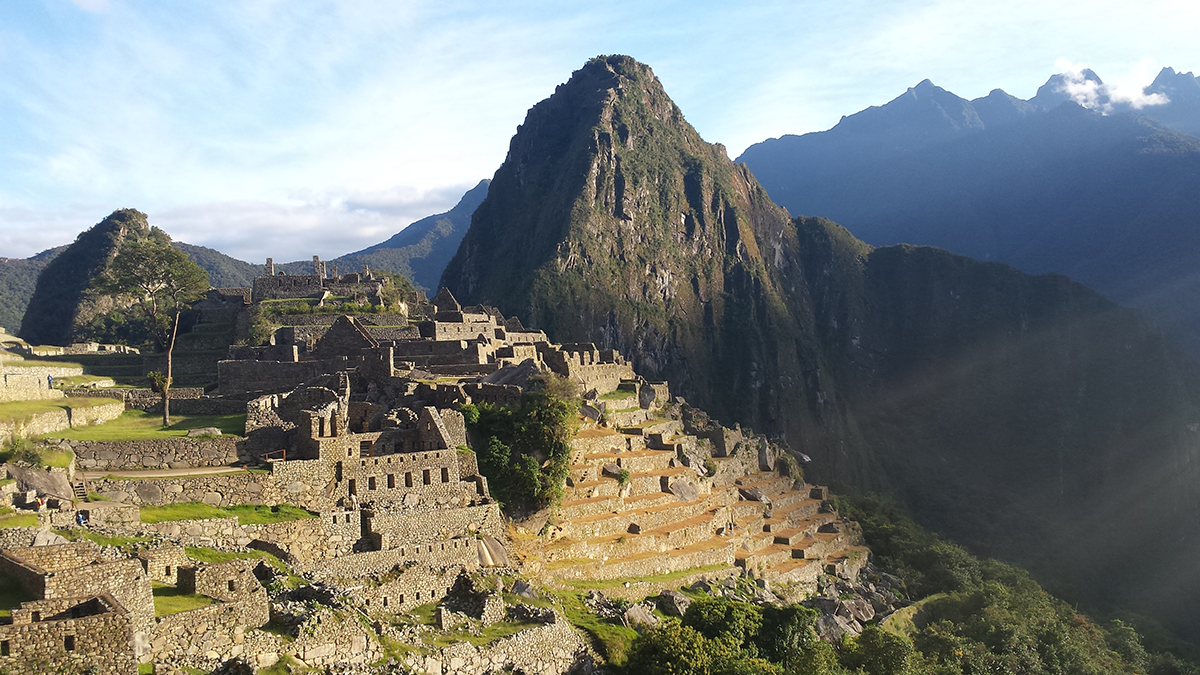
Epic grandeur indeed. I was seriously tempted to just post that photo and nothing else.
You can opt to buy an additional ticket to climb Huayna Picchu, the mountain in the center of the photo above overlooking most of the ruins. It was the high point, literally and metaphorically, of our trip. However, you have to buy this ticket months in advance (just like your tickets for Machu Picchu itself.) They only allow 400 people per day up that particular route. It’s only like $10 so you should buy the tickets when you’re planning your trip, even if you are unsure about making the hike. You can always decide when you get there.
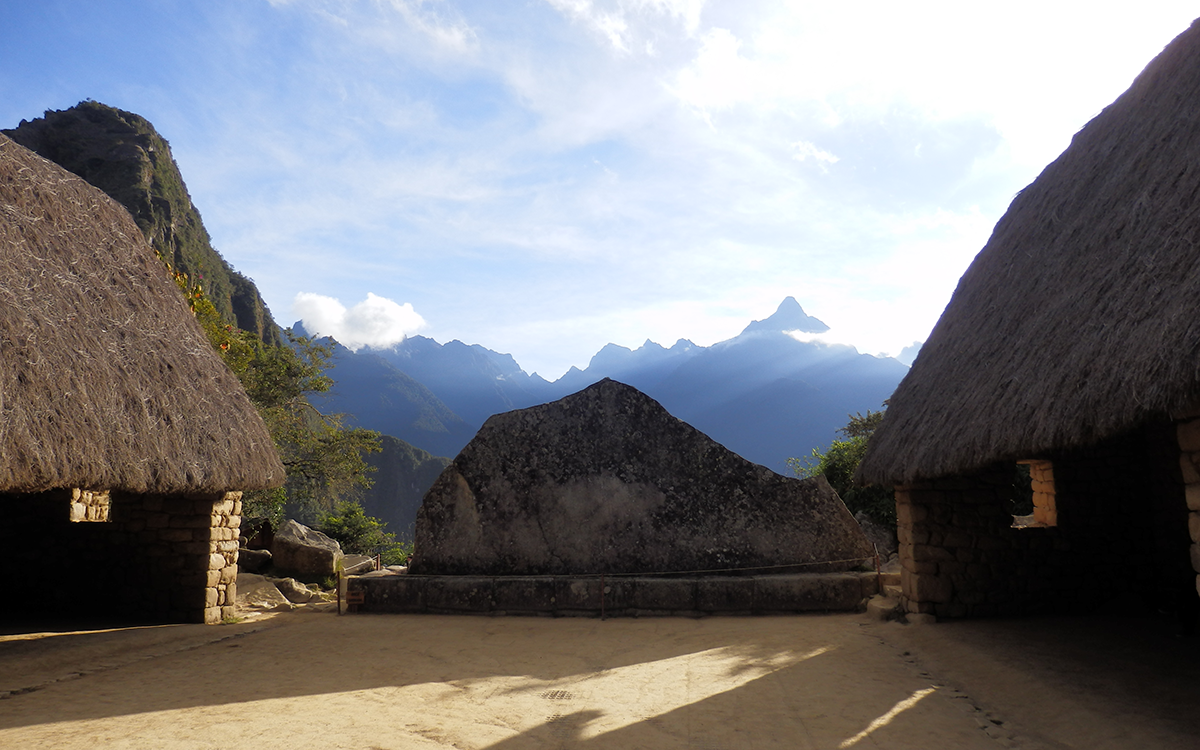
Though some web site listed it among the Top Five Scariest Hikes and it has been labeled the Hike of Death, I didn’t find it as arduous as I feared, nor quite as scary as it was hyped up to be. If you’ve ever climbed Blood Mountain here in Georgia, you can handle the physical challenge. If you’re scared of heights, don’t look down/back much and you’ll be fine. Some of the videos posted online to make it seem frightening are taken from areas you’re not supposed to go, so ignore them.
They allow the first batch of 200 people onto that particular path at 8AM and that’s probably the better time to go. The sun is still coming up and the rest of the park isn’t packed yet, making for the best scenery. Photos don’t do it justice, of course, but the little blue speck in the photo below on the left side of the mountain, about halfway up, is a person.
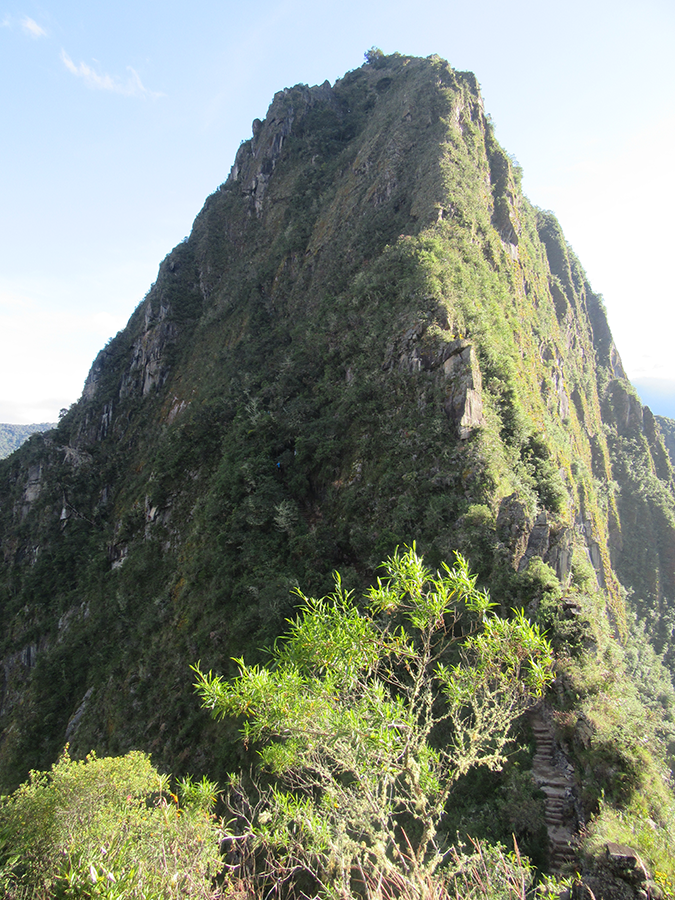
The views of Machu Picchu and the surrounding mountains get ever more dramatic as you climb. I kept stopping to take pictures, but eventually I realized the scene just kept getting better and it was probably pointless to get photos during the first half or more of the hike. Then again, it gave me an excuse to take it easy. The views get better, but the hike gets harder as you get closer to the top. You have all day, and this may be the best part of the day so take the time to enjoy it.
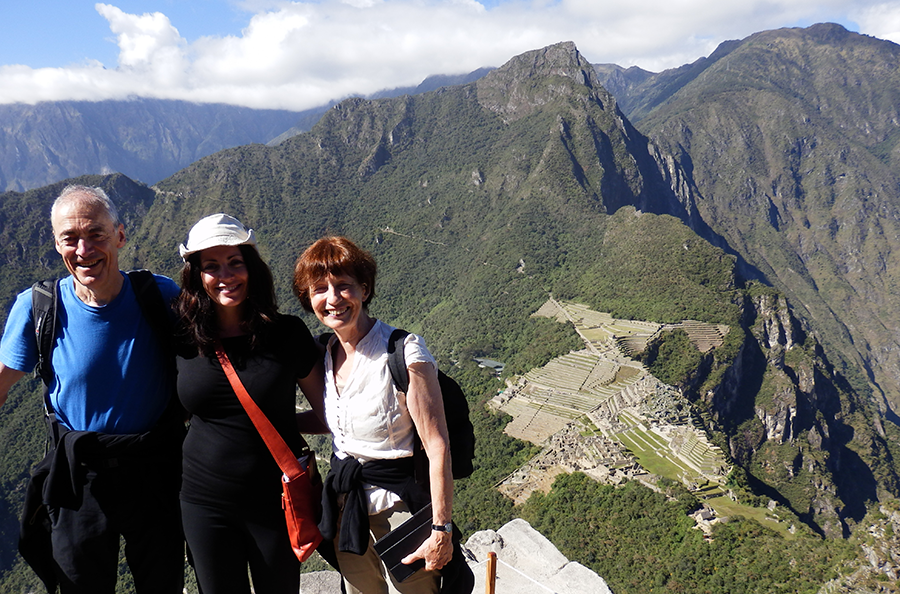
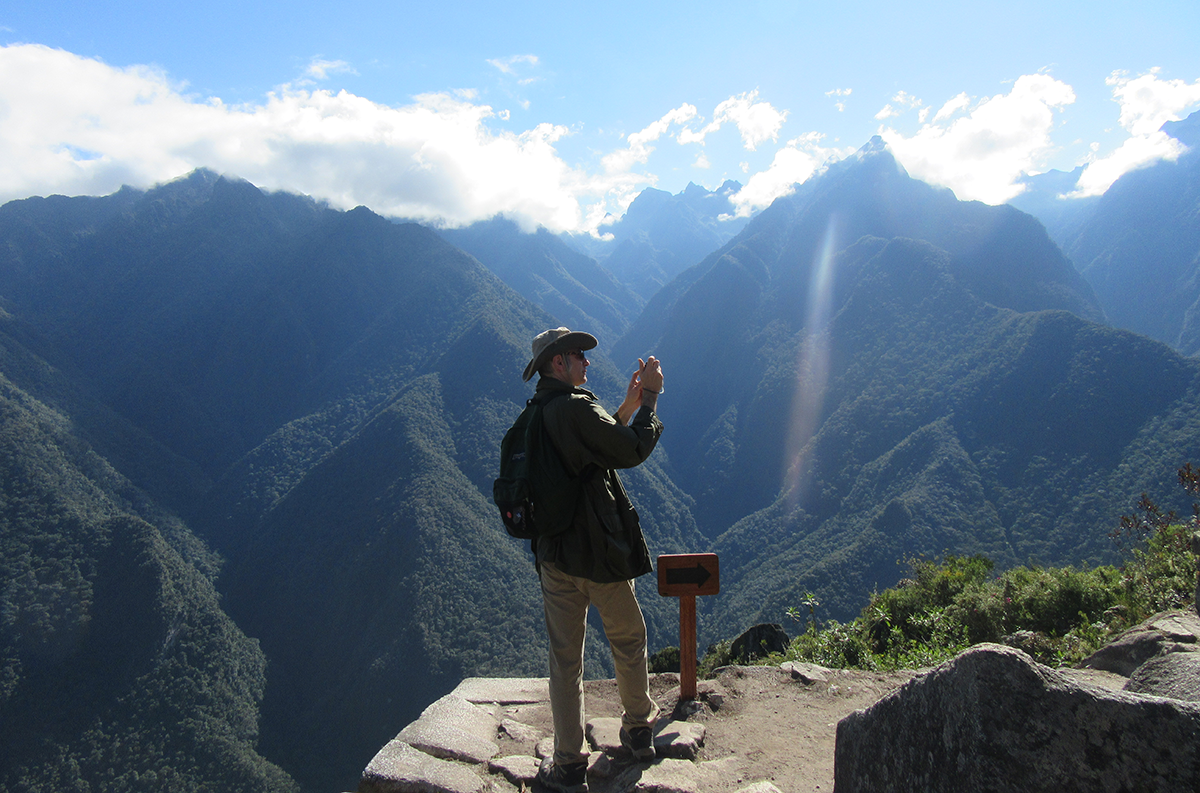
And we’re not even to the top yet. The path turns into a staircase that is more like a ladder with each step shallow and tall. It’s a workout, but there are places to step aside and rest and this is the hardest part of the journey.
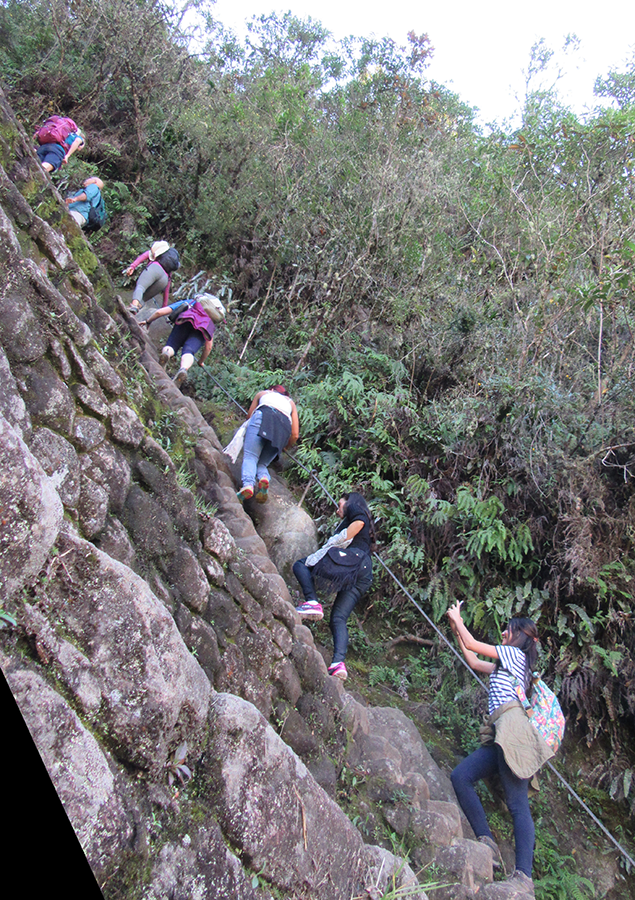
Once you get to the top, you get a 360-degree panoramic view of Machu Picchu and the surrounding valleys. (Seriously, click the link and scroll around. Yeah, there are apps that can stitch the photos together cleanly but where’s the fun in that?)
Supposedly, Huayna Picchu was the residence of the high priest where he kept a bevvy of virgins. Why one would keep virgins is beyond me , but that’s the story they’ll tell you. These days, there is little more than a collection of huge boulders at the pinnacle. A couple of park rangers watch over the hikers, and serve as willing photographers for hordes of people who want their picture in front of the ruins. There are various structures around the hillside, including some with the floating staircases, making for an interesting contrast with the modern road in the background.
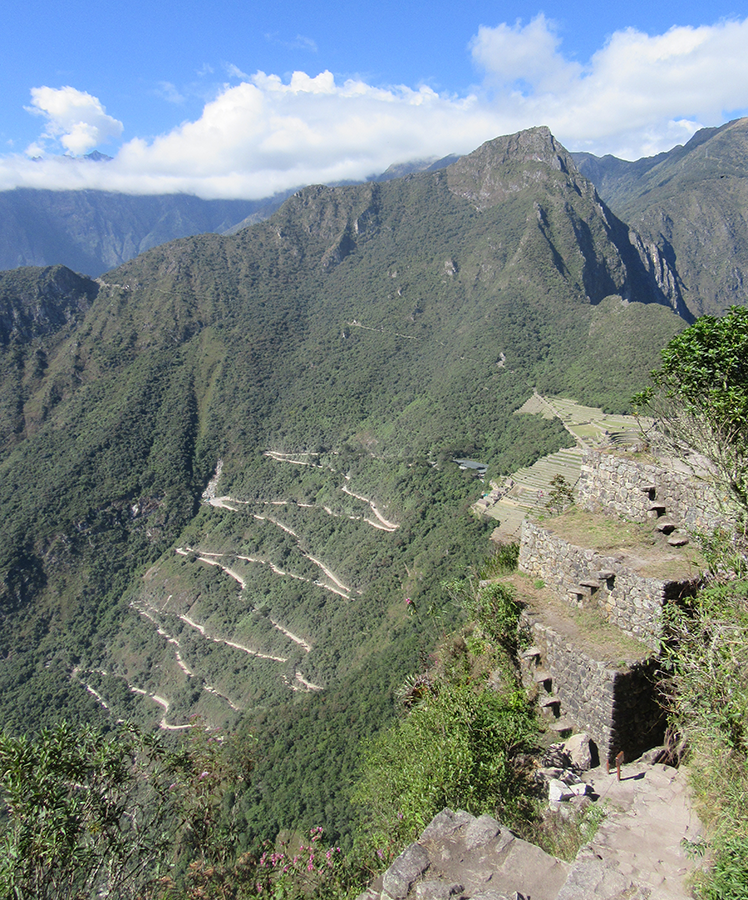
The hike back is a bit scarier than the hike up because you have to look down to descend the staircase, but once you’re past that it’s easy.
When we returned to Machu Picchu proper, the buses had delivered a lot more of the 2,500 people they allow per day into the park. After the glorious hike, and having seen other Incan ruins, we didn’t feel the need to explore every nook and cranny. I eavesdropped on some of the tour groups to get the scoop on some of the sites but, as with other ancient ruins, there’s not as much to see as you’d like. The contents of the buildings were removed, now stored in museums (one local, supposedly good, that we didn’t see, others in Lima.) Machu Picchu was a summer palace for the emperor, so it’s not even as historically important as other settlements. Incans weren’t into decorative architecture – I guess hauling 20-ton stones over a couple of mountains and hoisting them upright and fitting them together with virtually airtight seams was enough for them – so the structures are somewhat plain. However, the views alone would’ve made the hike worth it.
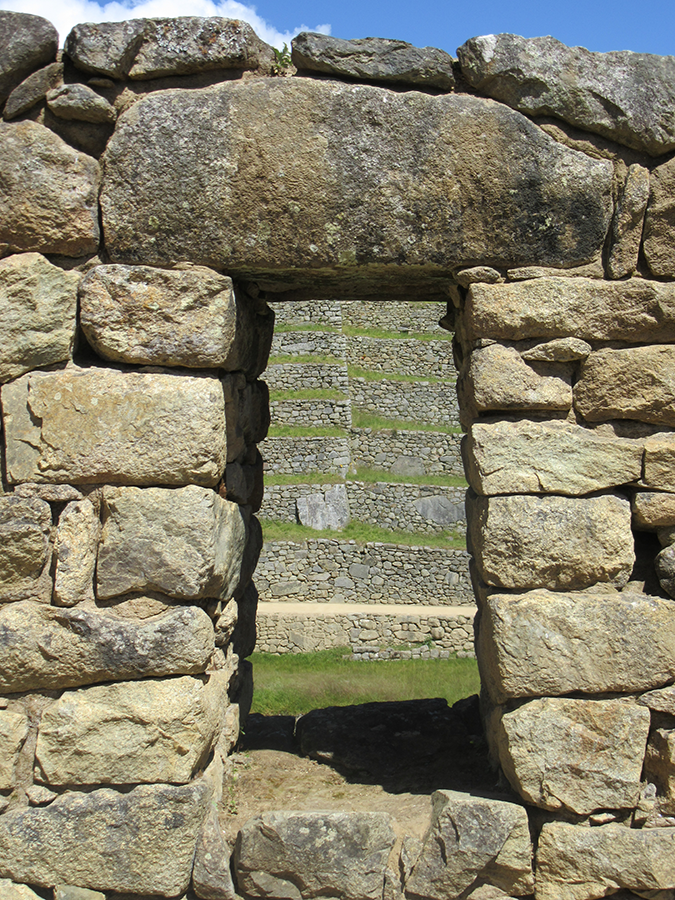
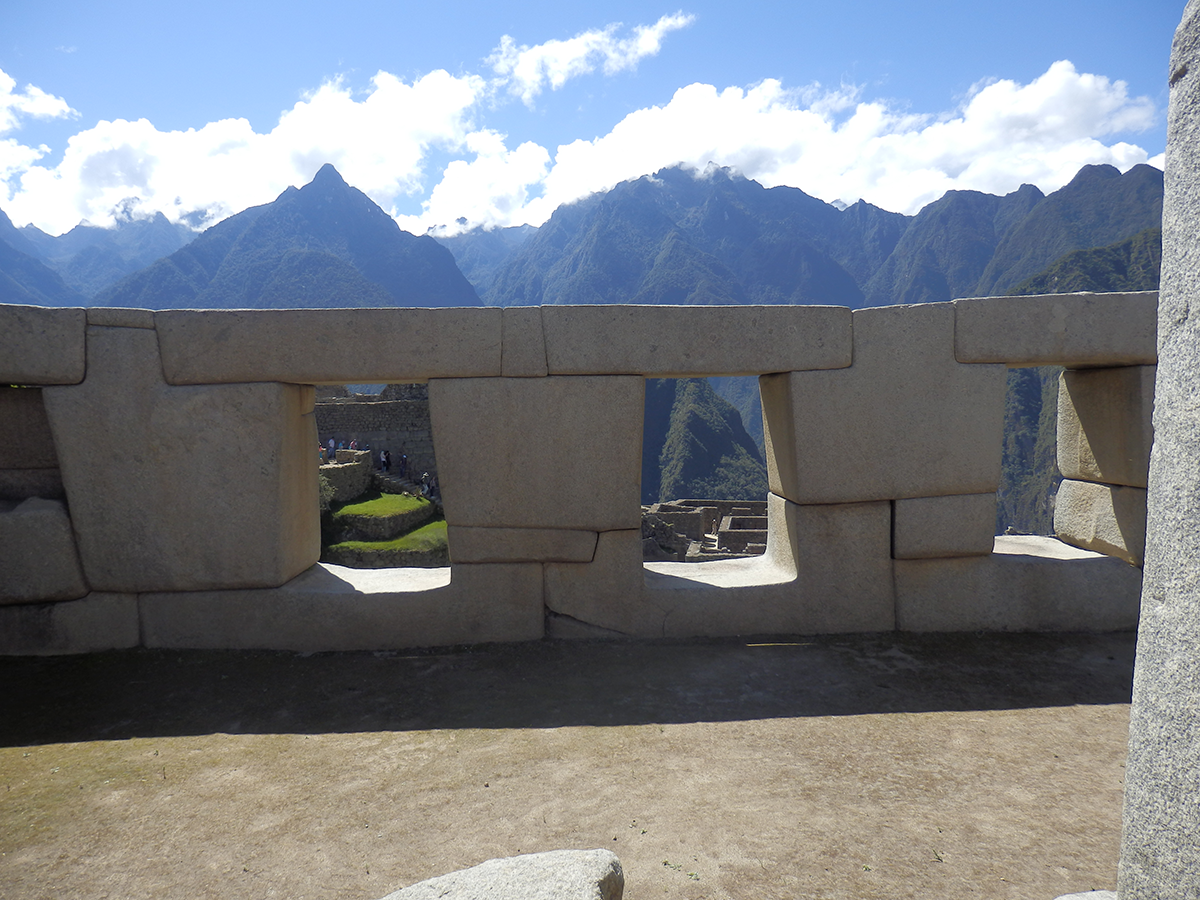
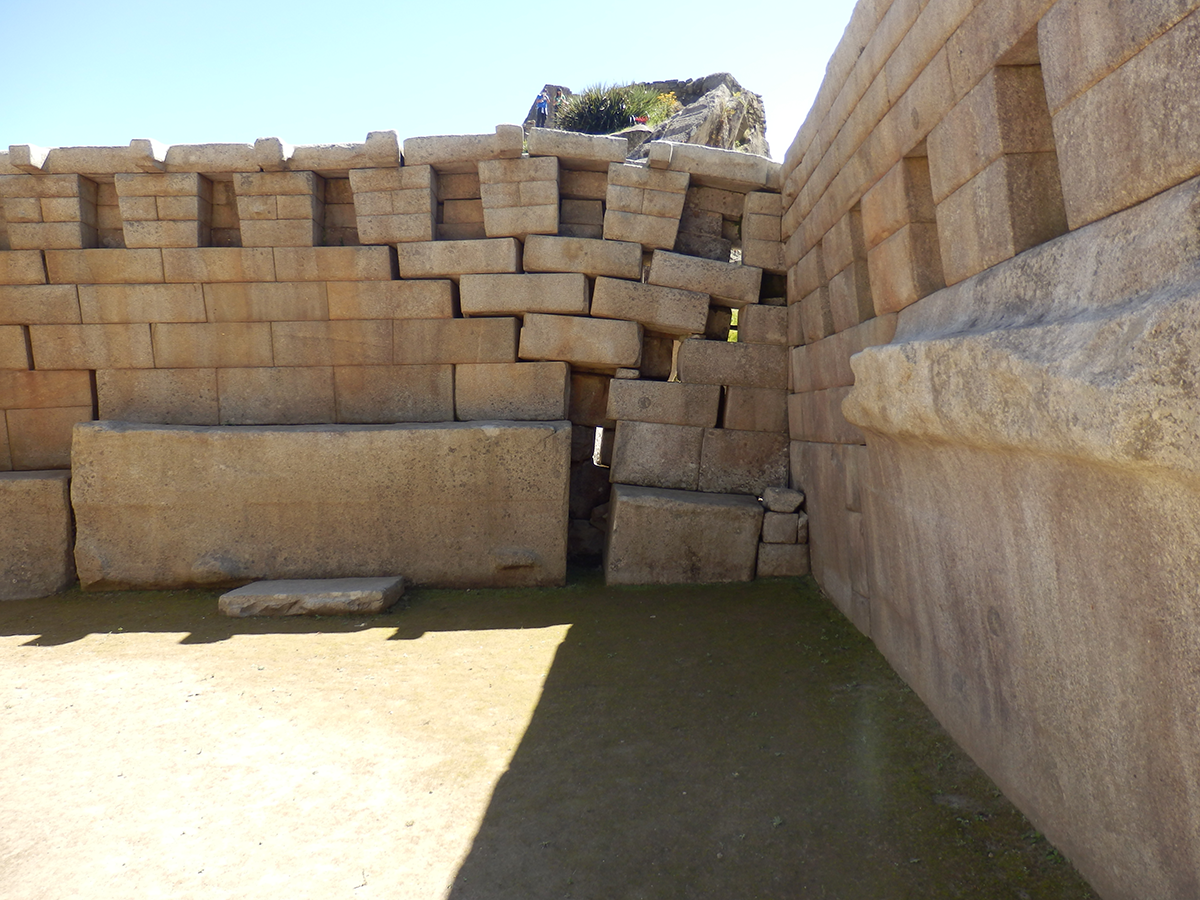
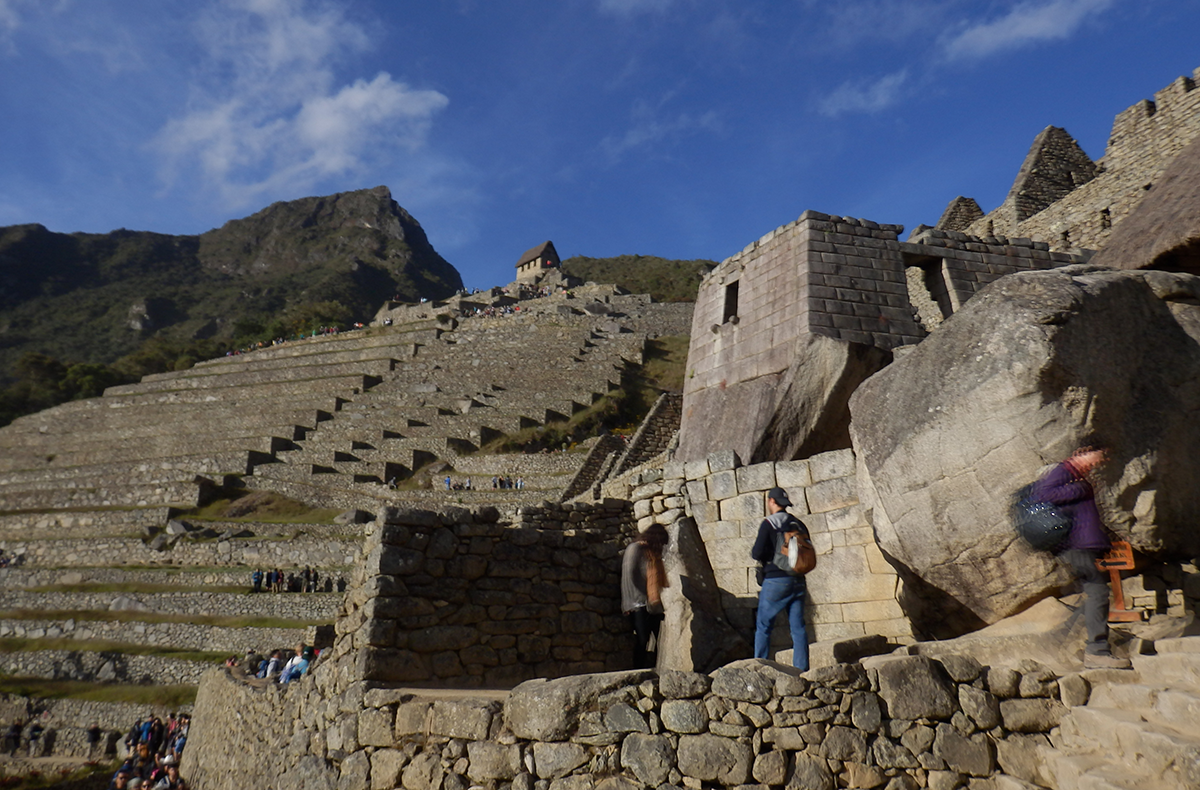
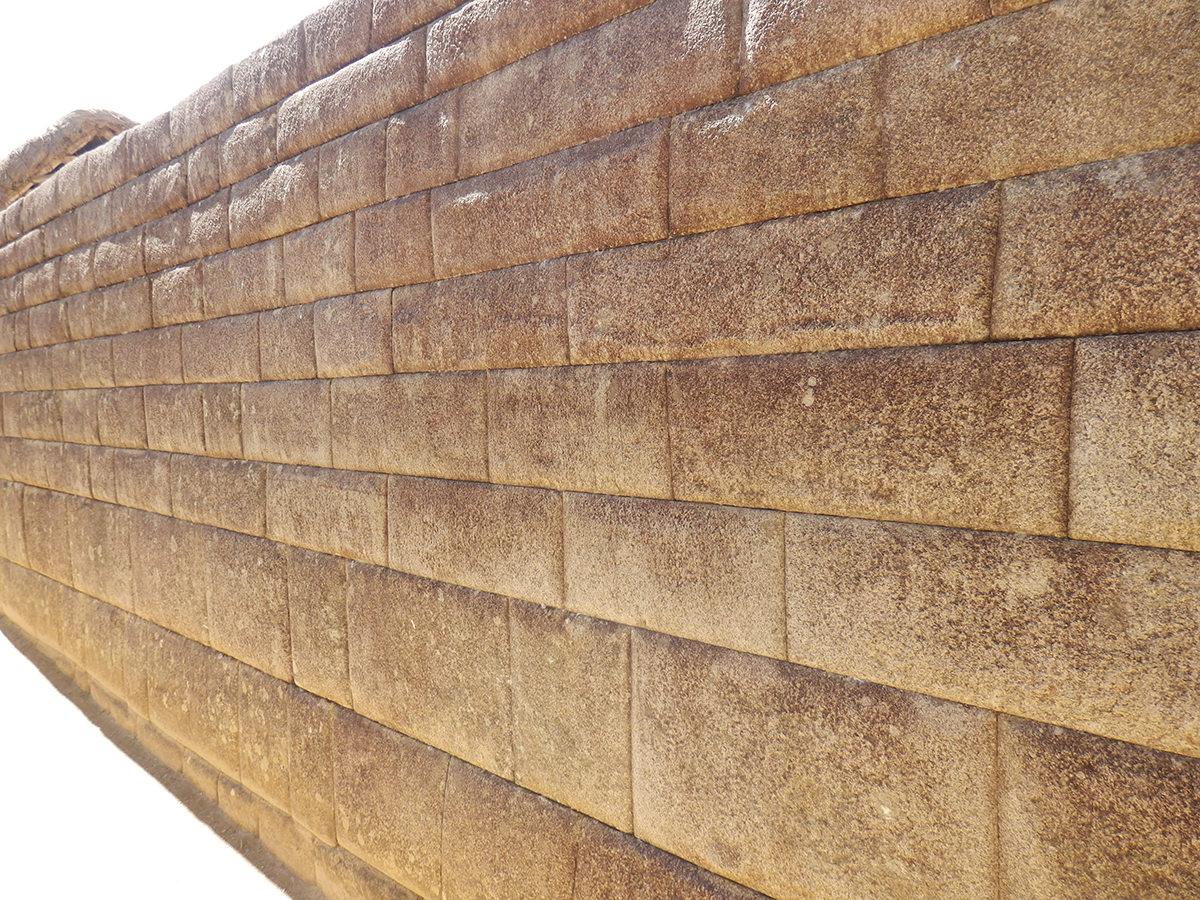
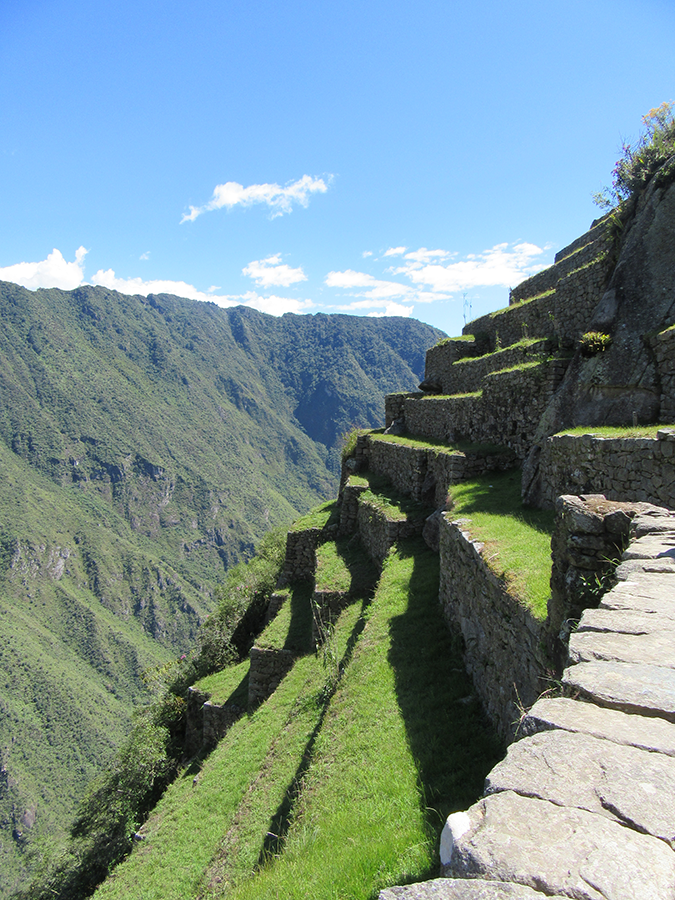
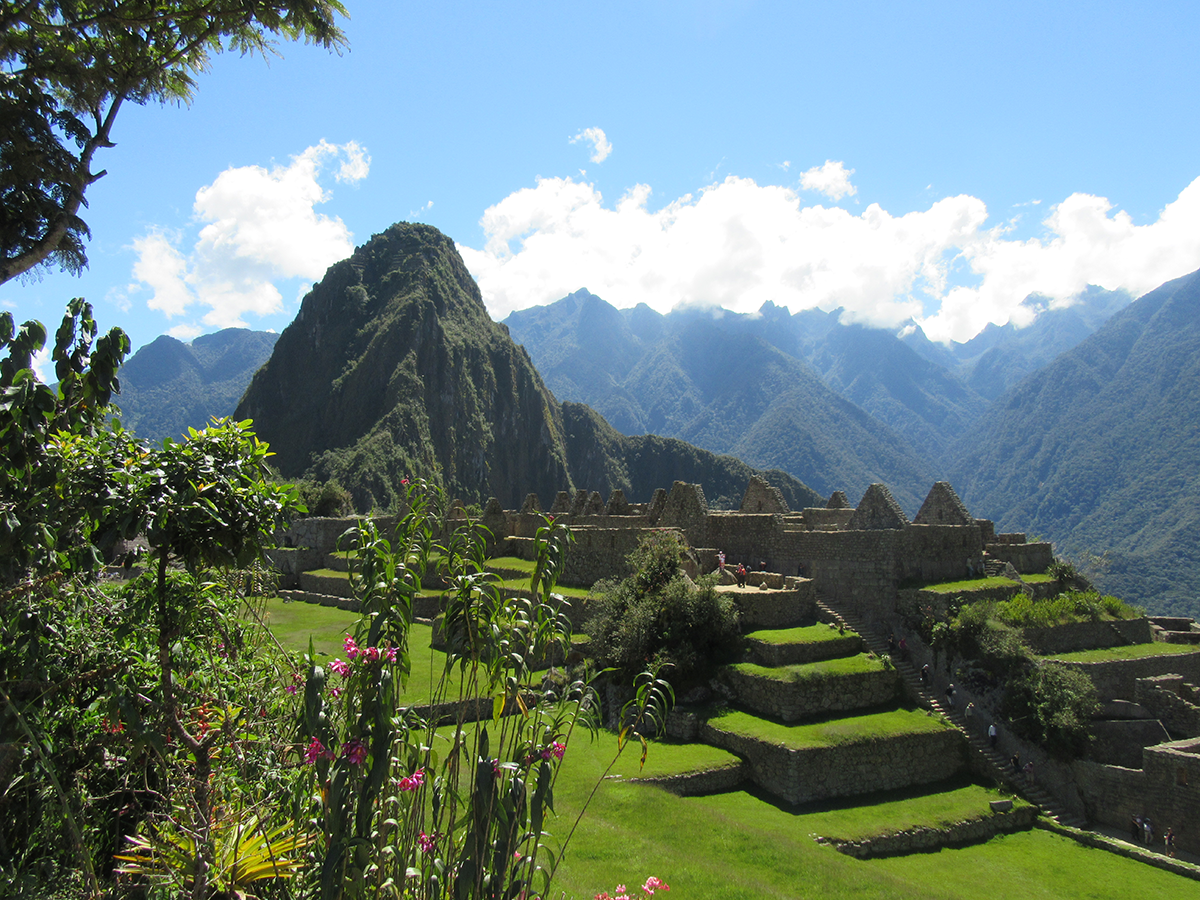
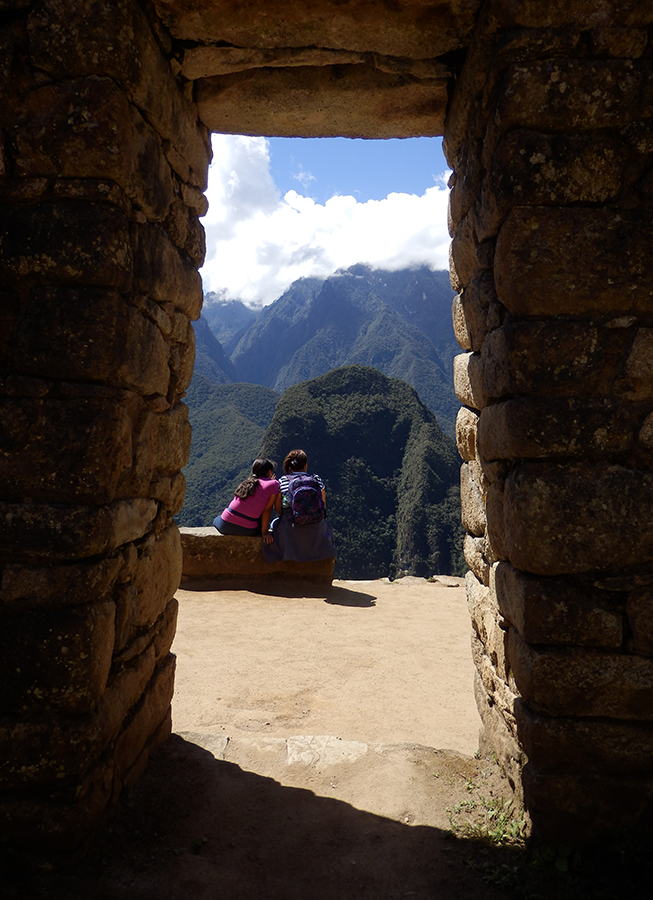
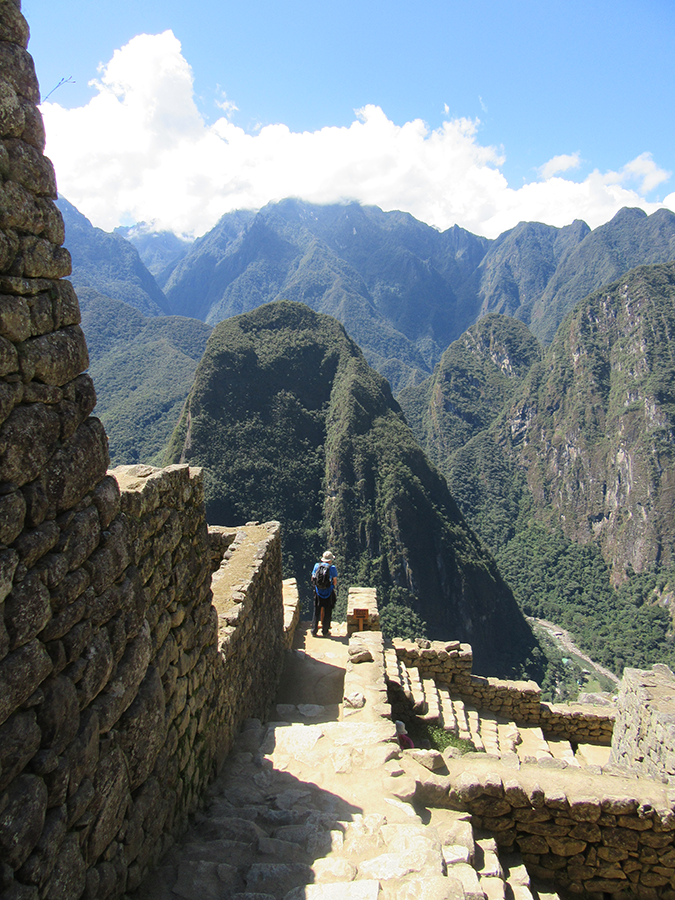
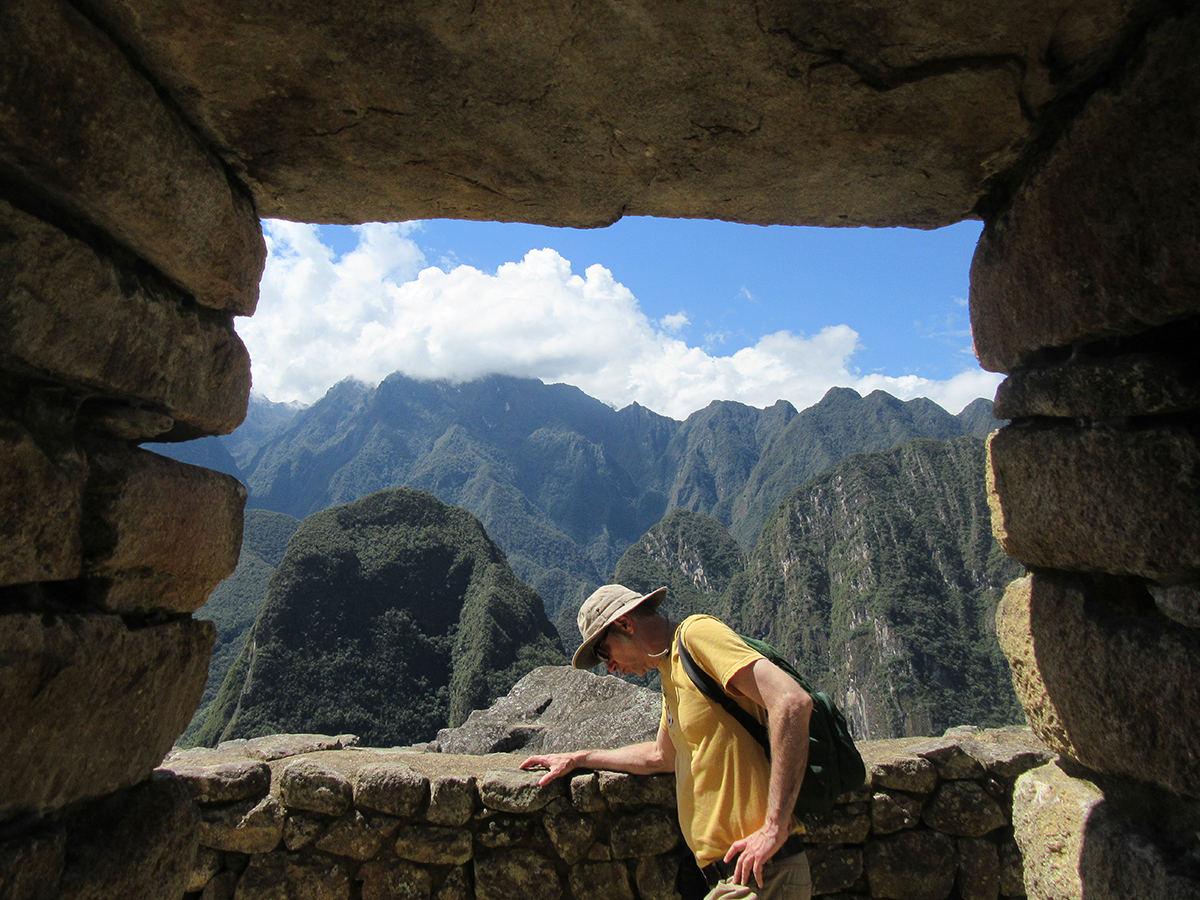
Back at the entrance is a large buffet-style restaurant, the only bathrooms in the park, an ice cream stand and so forth. The bus ride down the mountain is much like the hike down from Huayna Picchu – slightly alarming at times. The driver whips the bus around dozens of switchbacks, barely making room for buses making their way up.
We stayed two nights in Machu Picchu del Pueblo so we wouldn’t feel rushed at any point and it turned out to be perfect. We had a pretty good pizza at some place overlooking the river and sampled a variety of Pisco drinks.
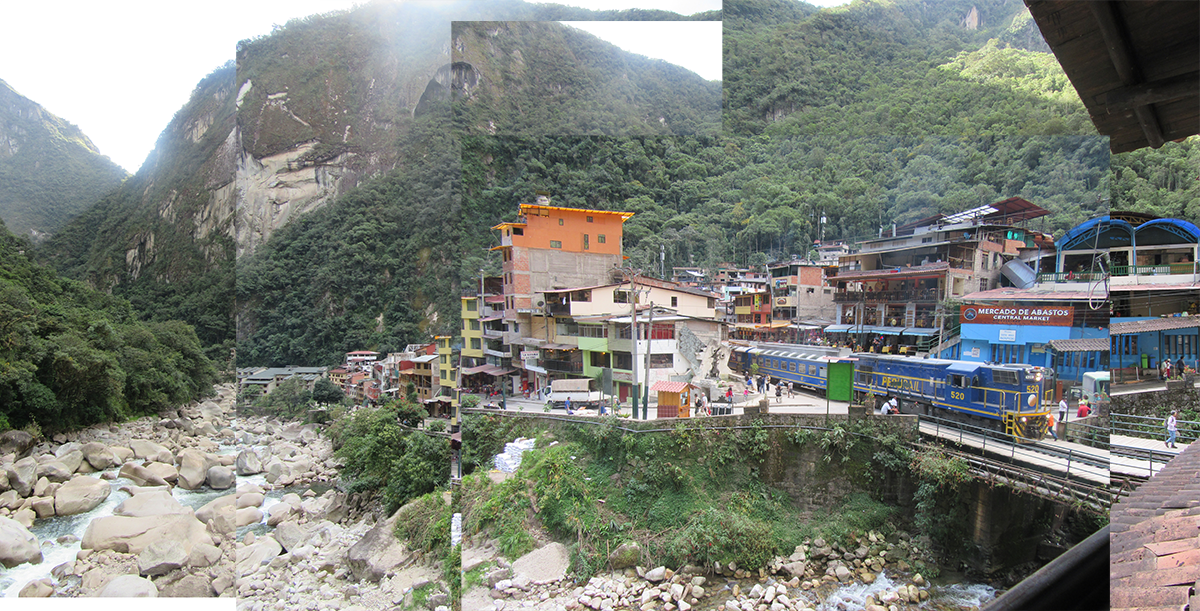
After exploring the town a bit more, we picked up some beverages and snacks and relaxed on the hotel patio, listening to the locals in the rec center across the square play volleyball, before calling it yet another early night so we could catch train in the morning.
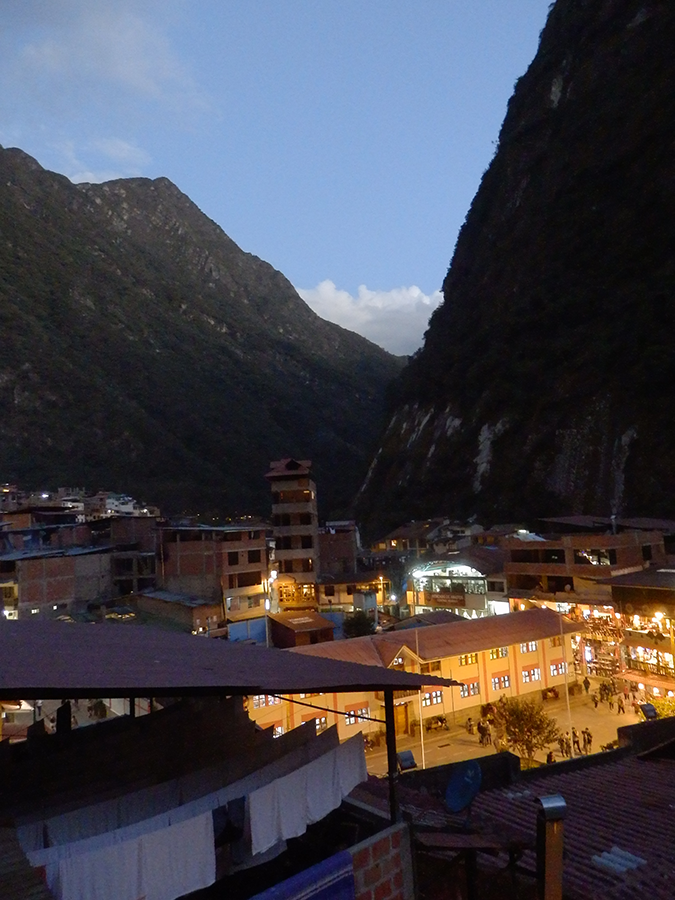
Next stop, Cusco, a wonderful town packed with history.